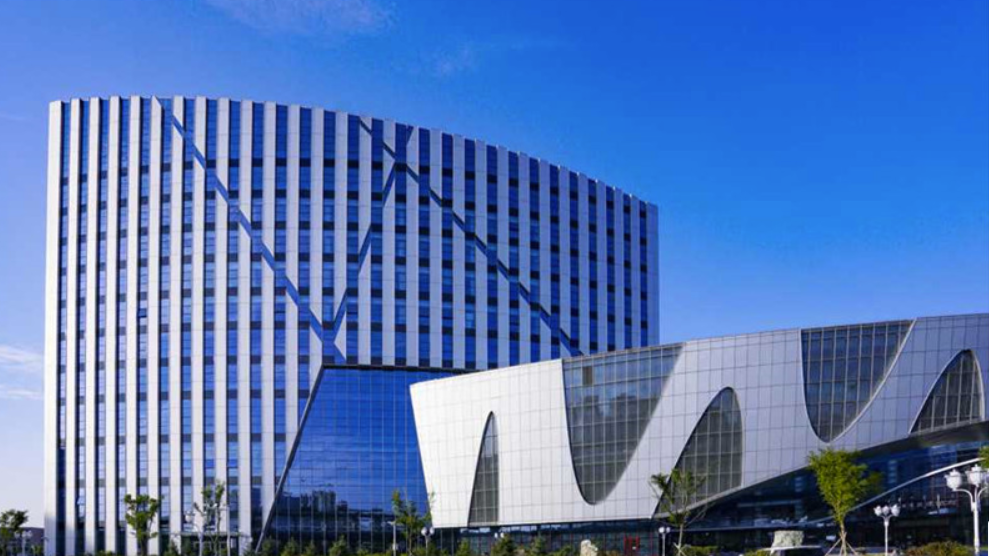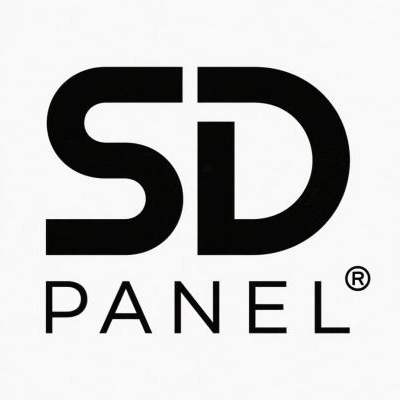Application of insulated metal panels in commercial building

In the relentless pursuit of efficiency, durability, and aesthetics within the commercial construction sector, Insulated metal panels (IMPs) have emerged as a preeminent building envelope solution. Insulated metal panels combine structural integrity, thermal efficiency, and design flexibility into a single component system.
Core material of insulated metal panels
At their core, IMPs consist of two metal facings – typically galvanized steel or aluminum, available in various profiles and finishes – bonded under controlled factory conditions to a rigid foam plastic insulation core. Common core materials include:
- Polyisocyanurate(PIR): In commercial building applications, PIR sandwich panels are the most commonly used. PIR sandwich panels have good thermal insulation performance and slightly better fire resistance, with a λ value of approximately 0.021-0.023 W/mK.
- Expanded Polystyrene (EPS): This is an economical option with good moisture resistance. While EPS sandwich panels offer decent thermal insulation (approximately 0.033-0.038 W/mk), their insulation performance is inferior to that of PIR materials of the same thickness. Furthermore, EPS sandwich panels have lower structural strength and a lower fire rating. In Germany, the use of EPS sandwich panels is limited to buildings under 22 meters in height or high-value buildings.
- Rockwool: Rockwool: Popular primarily for its excellent fire resistance (non-combustible). Its thermal insulation performance (0.035-0.040 W/mK) is generally lower than PIR, requiring thicker rockwool sandwich panels to achieve the same R-value. Rockwool sandwich panels are also heavier. Rockwool sandwich panels can achieve a fire resistance of 2 hours or more, making them widely used in buildings with stringent fire protection requirements.
- Extruded Polystyrene (XPS): XPS is known for its high compressive strength and excellent moisture resistance. The thermal insulation performance of XPS sandwich panels is similar to that of EPS sandwich panels. In addition, XPS sandwich panels have lower structural strength and lower fire resistance rating.
Advantages of insulated metal panels in commercial buildings
Energy and cost savings:
- Superior Thermal Performance: The continuous, uninterrupted layer of high-performance foam insulation within IMPs creates an exceptional thermal barrier. This drastically reduces heat transfer compared to traditional stud walls with batt insulation, where thermal bridging through studs significantly degrades performance. IMPs achieve high R-values in relatively thin profiles.
- Tight Building Envelope: The insulated metal panels are designed with tight seams, concealed fasteners, and integrated sealants, creating an extremely airtight envelope. This minimizes uncontrolled air infiltration and leakage—the main sources of energy loss in buildings.
- Reduced HVAC Loads & Operating Costs :Choosing insulated metal panels in commercial buildings can reduce HVAC loads and operating costs: The combination of high R-value and airtightness significantly reduces heating and cooling loads. This means smaller, less expensive HVAC systems can often be used, and ongoing energy bills can be significantly reduced, resulting in a quick return on investment.
Fast construction speed
- Factory-made: IMP precast elements arrive ready to install on site, prefabricated to precise dimensions and specifications. This eliminates multiple steps (framing, cladding, installing separate insulation, laying weatherstripping, and installing exterior walls).
- Fast Installation: Large-format insulated metal panels (typically from floor to roof or eave to ridge) can quickly cover large areas. Installation typically requires only one step (installation and fastening), significantly speeding up the closing of the building envelope. This allows for faster protection of interior works and shortens overall project duration.
- Reduced labor costs: The single-component system is easy to install, reduces the number of labor types required on site, and minimizes the coordination challenges between framers, insulation workers, and exterior wall workers, resulting in significant labor cost savings. Insulated metal panels are very popular in countries like the United States where labor costs are relatively high.
Design Versatility & Aesthetic Appeal
- Architectural Flexibility: IMPs offers a wide range of profiles (ribbed, grooved, smooth, textured), colors, and finishes (metallic, matte, custom). They can mimic traditional materials like masonry or stucco, or offer a sleek, modern aesthetic.
- Curved Applications: Curved applications: Certain types of IMPs can be cold-formed on-site to create eye-catching curved walls and roofs, achieving unique architectural designs. However, for other materials, achieving curved applications is still somewhat difficult.
- Integrated Systems: Some types of IMPs are designed with integration in mind from the outset. Windows, shutters, and other penetrations are integrated during factory production, ensuring seamless integration and maintaining performance integrity. This allows for tighter buildings, lower energy efficiency, and faster construction schedules.
Conclusion
Insulated metal panels are much more than just a building material; they represent a fundamental shift toward integrated, high-performance building systems. They offer exceptional energy efficiency, significantly speed up construction schedules, are durable, have minimal maintenance costs, and offer extensive design flexibility, making them ideal for a wide range of commercial building.
